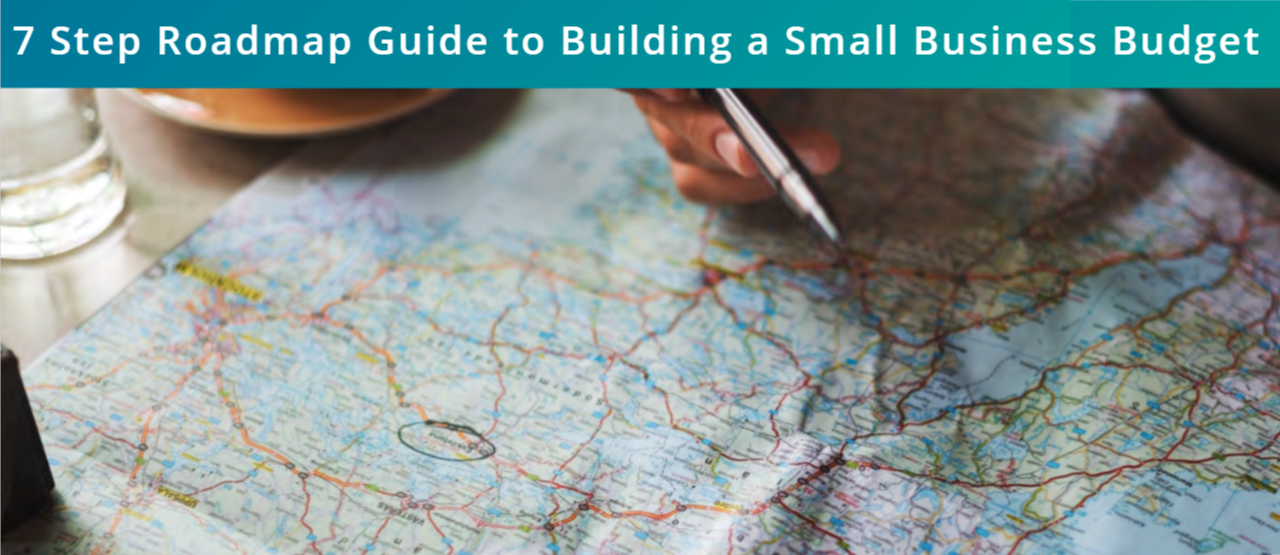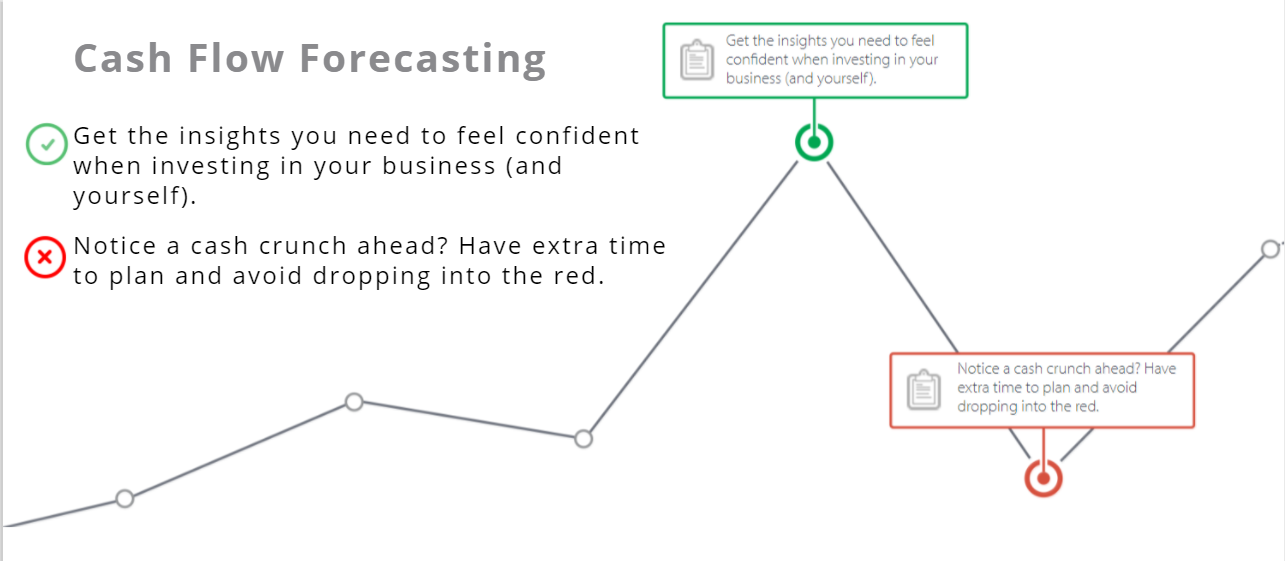Introduction: What is the Right Budget for your Small Business?
 Even before starting operations, one thing is certain: it’s going to cost money to start and run your startup business. The price of getting off the ground and successfully conducting a business can be one of the largest barriers for many would-be entrepreneurs with impactful ideas. If you don’t have a budget, you need to know how to transform your company’s trajectory and get the self-assurance to face the challenges of running your business.
Even before starting operations, one thing is certain: it’s going to cost money to start and run your startup business. The price of getting off the ground and successfully conducting a business can be one of the largest barriers for many would-be entrepreneurs with impactful ideas. If you don’t have a budget, you need to know how to transform your company’s trajectory and get the self-assurance to face the challenges of running your business.
At the core, budgets are fairly simple: they’re a roadmap to keep an eye on your spending. Most budgets are based on revenue generated minus total expenses incurred (aka net income). Budgeting is important for every company for a number of reasons. From the smallest startups, with little to no overhead and minimal cash burn, to more experienced companies looking for growth or stability, the right budget can be the difference between the right company direction and the wrong company direction.
Before diving into what goes into a budget, there are several reasons what budgeting is important for:
- Inserting more financial confidence enables better decision making. Even when budgets are merely guidelines, having a picture of your business associated with numerical values can be empowering.
- Preparing for the good, the bad and the seasonal helps with setting expectations. Every business goes through ups and downs; you’ll want to have reserves for times when cash is running low. You can build these reserves when business is doing well.
- Setting realistic goals creates a long-term mentality. Looking beyond day-to-day, budgeting helps you forecast so that you can plan for future investments while, simultaneously, promoting growth in your company. Remember, you have to spend money to make money.
- Having a shared budget can play a critical role in your company culture. Transparency around budgeting allows leadership in companies to think lean and focus on cost saving measures, when appropriate while using funds wisely.
With these points in mind, it’s important to build a budget as a means of making smart decisions, preparing for slumps, setting goals and weaving good spending habits into your company culture. Follow along to learn more about where to start building your budget and some of the key components.

Who is ProBooks NY?
At ProBooks NY, we give business owners a way to put their finger on the pulse of their finances so they can make bold decisions without hesitation.
We see many business owners who fear their finances because they either:
- a) Self-managed company books and finances without accounting experience
- b) Avoided company accounting altogether, until this avoidance started to affect the rest of their business or their personal life.
Small business owners, self-employed workers, and entrepreneurs need a modern solution to handle the tedious and intimidating tasks of bookkeeping, accounting and taxes. From our beginnings as a startup, ProBooks NY came across a few different ways leaders from businesses of any size can swap their financial fears for financial confidence.
In this guide, we will cover how every small business owner can take control of his or her business. We’ll show you what it means to plan ahead effectively with your financials in mind so you can turn your efforts into revenue.
Step I. Create a Basic Budget Based on What You Do Know and Can Expect

As you guide your startup to success, your budget will be the roadmap, blueprint, and backbone for your business. Which is why, when putting a financial plan together from scratch, it’s important to be realistic and consider whether the types of information you incorporate are practical and useful. With that in mind, let’s start off with the basics.
Chapter 1: Deciding What to Include
As with any new plan, you want to map out what you know before anything else. If you’ve created your own personal budget in the past, this should come naturally.
Start by Capturing Any and All Expenses and Income
Budgets are built from your history of spending and earning. Building an accurate prediction means meticulously documenting your business’ transactional activity. This step can be a major hurdle for small businesses and startups which don’t record data like this from the get-go. We cannot emphasize this enough: if you aren’t diligent about capturing each and every one of your costs, you’re destined to under-budget. A good place to start building a baseline budget is to get your bank statements (also a good reason why you should keep your business expenses separate from any personal expenses).
The goal of any budget is to predict your monetary needs, refine your regular spending and make smarter decisions using the resources you have. At first, there will be a heavy emphasis on day-to-day cash flow management, but as your business grows your financial responsibilities become more about thinking ahead. When you’re building out your historical data, you can also assume certain costs based on the nature of your business and industry. This is particularly useful if you are anticipating upcoming costs but haven’t paid for them yet.
What to do with One-off Costs
While it’s important to capture all of your costs to understand the full picture of your business, make sure you also look for outliers that you can ignore. It’s natural for startups to incur many one-off costs at first that won’t happen again. Budgeting for singular purchases or irregular cash advances doesn’t necessarily help your business on a regular basis, and those funds are better spent on your known costs or put away for a rainy day.
Work with a simplified budget to focus on the money entering and exiting your accounts on a regular basis. When you have a full year of captured transactions, evaluate. In addition to your steady monthly/quarterly costs, what’s the average that you’re spending on one-off costs? Add that to each month/quarter as a cushion so you don’t come up short. This gives you a foundation for applying your knowledge and experiences as you grow and learn more about what to expect. Some examples of typical one-off costs to include:
- Initial Equipment
- Deposits (Think office spaces)
- Starting Inventory
- Incorporation Fees
- Legal Fees
- Licenses/Permits/Franchise Fees
Chapter 2: Identifying Recurring Transactions and Defining Periodicity
As soon as you can, start looking for transactions that happen more than once in any given day, week, month or quarter. When you start to think about expenses and earnings as part of your ongoing operation, you can begin to plan for them on a regular basis. You’ll have three major types of recurring costs to plan for- fixed, variable and mixed:
- Fixed expenses stay the same over each period. Rent, payroll, insurance, taxes and loan payments are a few example expenses that are common among almost any business budget.
- Variable costs are also recurring on a periodic basis but different from fixed costs in the sense that the actual cost value fluctuates based on different factors, activities, and uses. You’ll see this type of cost in sales, inventory management, contractor/billable hours or credit card fees that depend on performance.
- Mixed costs are a hybrid of both fixed and variable expenses. Also known as semi-variable costs, these include a fixed rate for service or membership along with a varying cost typically based on usage. The prime example of a mixed cost is a utility bill which has a typical monthly rate for service with added costs based on consumption (heating, cooling, lighting, etc.) during that time.
Do your best to estimate the last two types of costs when budgeting in advance. You can base an approximate amount on the typical rate or an average of the months you have historical data for, but always be sure to go back and retrospectively update when you get the true amount.
By looking at your Profit & Loss (P&L) Statement and Income Statement, or even just the transaction history in your business’ bank account, you can see what type of spending keeps coming up. Add those expenses to your budget and note which costs are steady or fluctuate, so you know what needs to be regularly updated.
Are you Starting to See Patterns? Use them to Define Your Business’s Periodicity
In some ways, if you’ve followed the steps above, you will already be tracking repetition within your business activities. You’ll see repeated costs and incoming revenue and have a good tracking process in place moving forward. However, that data collection and categorization is only half of the budgeting picture. The other half requires clear expectations.
What is Periodicity?
As Merriam-Webster defines it, periodicity is “the quality, state or fact of being regularly recurrent or having periods.” Now, it would be pretty presumptuous for any first-year company to set their periodicity in stone in its first few months, or even its first year. However, startup leaders and executives should use this as a discovery activity and pay attention to the external circumstances that affect their company periodically. Instead of writing off momentary roadblocks or prosperity, start learning from those experiences. This is where you use the past to your advantage, as you prepare.
Step II. Adding an Element of Your Future

Ultimately, businesses make spending decisions based on educated guesses concerning performance trends and revenue generating activities. However, the savviest leaders take this one step further and build more than one plan.
Chapter 3: Planning for Multiple Outcomes
A wise and cautionary mother once said “plan for sunny and rainy days, but don’t decide what to wear just yet,” as she packed her child’s bag for school one indecisive March day in the Pacific Northwest. As a metaphor, the advice also rings true when forecasting your business revenue.
To start, you need to get a sense of the relationships between your expenses and your streams of income. Building a budget strategy requires understanding the balance between what income you have and how you can spend that money to make most of it.
Business is Cyclical

The phrase “spend money to make money” didn’t come from nowhere. Your expenses and your income have a very close relationship. More than just spending money to make money, it’s important to identify how each expense ties to each revenue stream.
Take sales as an example. Many businesses have sales representatives to drive or assist with customer acquisitions. Hiring and training a sales team requires an upfront investment. To budget for this correctly, list all the costs associated including headcount:
- Salary
- Benefits
- Equipment/materials
- Rent/mortgage payments
- Any other costs that are specific to the role of budgeting
Then, set expectations for how your hirees will cover those costs based on your average revenue each sales rep’s closes. But don’t stop with just your estimated outcome. In both good and bad ways, things don’t always work out the way you expect.
Create Two Budgets: Best Case and Worst Case
When it comes time to apply your knowledge toward your future financial strategy, it can be useful to think of an IFTTT (if this then that) approach.
You’ll always start by including the recurring expenses we identified earlier. These should not change. From there, you will set reasonable benchmarks and stretch goals for your business performance. These goals will be the criteria for how you decide to spend money.
Here’s a simplified example:
Let’s say a business gets a voucher for $1,000 a month for an entire year to spend on advertising.That business should then set an optimistic goal that revenue will jump 25% that year. The business should also set a humble goal based on its worst-case benchmark at a 15% loss of ARR (annual rate return) and create a budget for both scenarios. If the business hits or exceeds its revenue growth goal, it’ll start spending more money on advertising and even increase that budget to double ad spend each month. They will also use that success as an indicator to spend more money– hiring an additional sales representative and product team to build new features that are even more competitive and marketable. Additional headcount also means moving up to new or additional office space. If they were to come up short or closer to its worst-case scenario, the business would use an alternative budget with more conservative spending. It may even consider cutting perks/benefits or headcount or downsizing the office.
Any experienced accountant or CPA will tell you that part of being realistic means tackling any time period with the expectation that it could be a high or a low time for business. Planning for both outcomes with a well-thought out pivot plan affords your startup with more flexibility and reactivity.
Seasonality is a common experience many businesses face every year, and it’s important to consider when building out your budget. There are obvious examples when it comes to tanning salons, ice cream shops, tax firms or event space venues, but even digital agencies or subscription-based applications can experience high and low points in cash flow throughout the year. Here are a few tips on how your business can plan for seasonal slumps and take advantage when business is booming.
Chapter 4: Building Seasonality Into Your Budget
Forget About “Feast or Famine” with these Budget Tips for Seasonal Businesses
- Plan holistically for the entire year
For businesses that aren’t seasonal, budgeting means determining an estimated monthly income and deciding how to spend it wisely. But seasonal businesses don’t experience month over month periodicity or repetitive patterns in cash flow—it’s more accurate to look at year over year statistics. Instead of estimating September’s income from August’s, it will make more sense to look back at September’s performance last year and anticipate the same activities.
This is true for your income, but also for planning to cover the expenses that will be due each month. This becomes easier to plan for when you budget for an entire year at once. You’ll also be more responsible when bigger sums of money come in during busy seasons and more comfortable making purchases when sales are slow.
- Stick to your budget during busy season
When your sales are in full swing, it can really feel like you’re on top of the world. If that peak is better than you anticipated, it can blind you from the reality that is the rest of the year. Don’t let this derail you from your plan! Think like a saver and keep your spending to what you’ve already budgeted for that time of year. This will give you extra cushion during a slower time or give you time to research the wisest way to spend extra funds in the long run.
- Be disciplined with cash management
In her small business segment in USA Today, Rhonda Abrams emphasizes how important it is to manage your cash: “This takes discipline! During the high season, set aside a certain percentage of sales in a reserve account. Get to know your banker, and establish a line-of-credit. You’ve got to be able to pay your bills when the snow melts or the tourists leave.”
Rhonda also mentions establishing a line of credit. Short-term debt is a worthy option when cash isn’t readily on hand. This way you will always have enough capital to keep yourself afloat during slow periods. Just be sure to pay it back once your cash flow picks up again—interest levels on short-term financing can compound quickly!
- Be rational during your slow season
When we say rational, what we mean is: don’t let a slow sales period stop you from growing your business. More cautious business owners may be tempted to make hasty budget cuts. But while you should keep any frivolous costs to a minimum, you shouldn’t be afraid to take on opportunities and spend in ways that will grow your business.
The important part is to consider your potential Return On Investment (ROI). Maintaining a business is a year-round process, and in many cases, the more you spend during your offseason to prepare, the more revenue you’ll be able to generate during busier times.
- Consider an alternative fiscal year
Seasonality is one of the primary reasons businesses trade the standard year (12-month period starting January 1 and ending December 31) for an alternative fiscal year or short tax year. When your business sees an annual influx of income during a certain season or even after a special event, an alternative fiscal year can make tax planning, preparation, and filing much smoother.
Some businesses—mostly holiday retailers—opt to file with a short tax year because they only exist for a few months out of the standard year. Under this option, the business files their taxes only for the annual period they were open for business.
Using business seasonality to your advantage
Depending on the business you’re taking on, you may already know to expect seasonal fluctuations. For many new businesses in emerging industries, seasonality can come as a surprise. If you are starting to see trends for seasonality, your first year is incredibly crucial to future success. Incorporating seasonality into your budget is important for accurate forecasting and for keeping numbers on track. It’s also about protecting yourself against the mental hardship of fluctuating business patterns.
Again, being a first-year company with seasonality is twice as challenging when it comes to forecasting because data is even more limited. Whatever you do, be sure to track your own observations incessantly and be as conservative as possible. In the meantime (first year), use industry benchmarks or look at competitors and how their revenue changes.
Step III. Getting Buy-In for Your Budget
The way your business spends its money says a lot about its values. You want to build a budget as an accurate representation of how you prioritize each part of your business. Any experienced business analyst will be able to glance at your financial statements to quickly understand whether you’re investing in the long-term or can only see as far as the next month.
Chapter 5: Making Sure Your Budget is Useful
A Budget is Only Useful When it’s Relevant, Realistic, and Recognized
Remember, the goal of a budget is to lay out a roadmap for your business, by consolidating information in a way that makes it useful. It’s also important to continually adapt and adjust your budget so that it accurately reflects your business.
We’ve incorporated many different elements into your budget so far. The final step in creating your budget is to take the trends, the patterns and the habits and start allocating your money for day-to-day operations, recurring expenses and anticipated expenses and rainy-day funds.
The process of budget building can seem daunting, but there are a few financial tools that make this process a little easier.
Using Financial Tools and Accounting KPIs to Track Budget Effects
From your standard financial reports (Profit & Loss, Balance Sheet, Income Statement and Cash Flow Statement), you can learn useful information into your business that can speed up the budget process.
In addition to your general ledger and the financial reports you’ll use to track cash flow, income and expenses regularly, business owners can also rely on their burn rate and cash runway when establishing a solid business budget.
Burn Rate; refers to the difference in the cash a company has over a specific period of time (typically a month). So, if a company spends $10,000 a month, their monthly “burn rate” would be $10,000. Once you know your burn rate, you can compare it with forecasted income and adjust your monthly spending if you see that you’re burning more than what you anticipate to earn.
Cash Runway; is the amount of time your company could survive off its current cash at its current burn rate. This is especially true if you are a startup that has raised funding. So, if you have $80,000 in cash, and a monthly burn rate of $10,000, your cash runway is eight months. Startups that closely follow their burn rate and cash runway know exactly how much money they need to cover their costs at any given moment.
This is useful as a business gains its footing with an initial customer base and has yet to build a consistent revenue stream or sales pipeline. The better you are at tracking your expenses, the more accurate your burn rate and cash runway will be.

Don’t Forget to Reflect
You’re not doing anyone any favors when you B.S. your way through this process. Leave all vanity metrics behind and stick with what will help you use the past to think ahead and improve your bottom line.
It’s also not a time to keep your head in the sand. Continue to review and apply new knowledge as you gain it. The small business association (SBA) recommends revisiting your business’ budget on a monthly basis with all key stakeholders.
This is a time to judge what types of expenses are working and anticipate upcoming expenses and revenue generation. Every step you take toward becoming a smarter, more data-driven business will set you ahead. Not only will it help you manage expenses and increase your profits, but your business will also be poised to impress investors and creditors when you need growth capital down the road.
In the wise words of ProBooks NY’s Founder & CEO, William Lee: “be transparent about your budget. Share it with your team and explain where it comes from.”
Your budget is only effective if your fellow leaders and department heads are aware of it. At ProBooks NY, we budget for everything from software tools to happy hours, and we can do this effectively because our leadership team has transparency about the budget and is free to trickle that down to their team.
This transparency is what makes it easy to question any seemingly silly expense that comes up. Understanding the logic behind budgets will help your employees know how you’re prioritizing and making key decisions. This will, in turn, empower your team to make budget-conscious decisions when strategizing and planning projects.
Chapter 6: Finding the Right Level of Monetary Transparency
Where Transparency and Utility Collide—Rolling Out Your Budget Company-Wide
When budgeting projects, always think about the ROI. If the potential or perceived return is worth five times the investment in the project, then it’s a go! But the important part is actually calculating that investment accurately. This means more than just looking at what products, vendors, and freelancers might charge but applying value to the time investment of your employees.
Make Every Department a Value Center
In this sense, you can run every department like an agency would and challenge all employees to track results to their time spent working. Be smart about tracking and tying all efforts back to activities and functions.
The data you need to make an impactful business budget isn’t going to just fall into your lap. Most small business owners and CEOs don’t have a degree in business or finance. Depending on your goals and the tools you have, getting the right performance metrics can get complex.
Chapter 7: Getting Your Hands on the Right Financial Data
Chances are you’re Already Asking the Right Questions:
- How can I truly judge our financial position?
- Which ratios indicate what?
- Is there a perfect way to answer investor questions?
- Could I be optimizing my team’s operations?
These are natural questions for an efficiency-oriented executive to ponder, but finding the answers is not as simple as looking at your bank accounts, glancing at the money in there, and calling it a day. Instead, good accounting can give you those answers and help you identify these areas as well as where you are over-performing, underperforming, or right on track.
Luckily, there’s never been so many options on the market for managing your back office. But deciding on the right startup accounting provider for your business is a considered choice. At the very best, choosing the wrong accounting or tax provider can create unnecessary barriers to growth that cost you time and money, while the worst choice can riddle your business with painful financial inconsistencies and a backlog of compliance nightmares.
We recommend doing the research to find the solution that makes sense for your business’s budget and company size as well as your goals for growth and any specific compliance requirements you might have due to the nature of your business or industry.
Conclusion
Creating a monthly business budget may seem like a hassle, but we bet it’s something you’ve been thinking about for a long time. Take the leap! Budgeting is an essential infrastructure project that gives you the ability to make conscientious financial decisions so your business can stay on track and grow. Probooks NY is a small business consulting and bookkeeping firm. Get a free consultation today.








